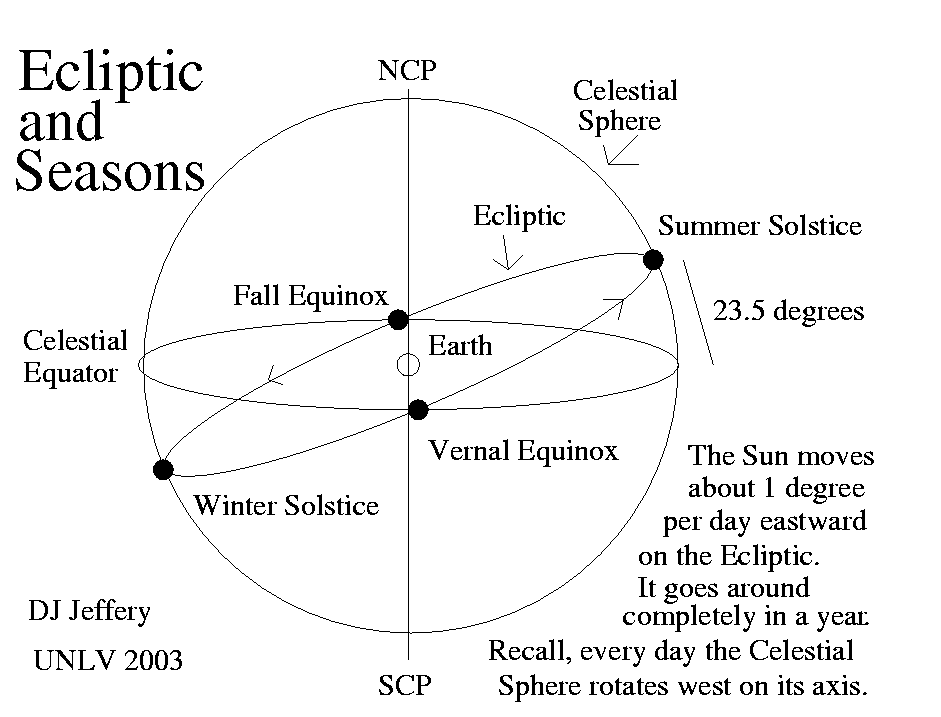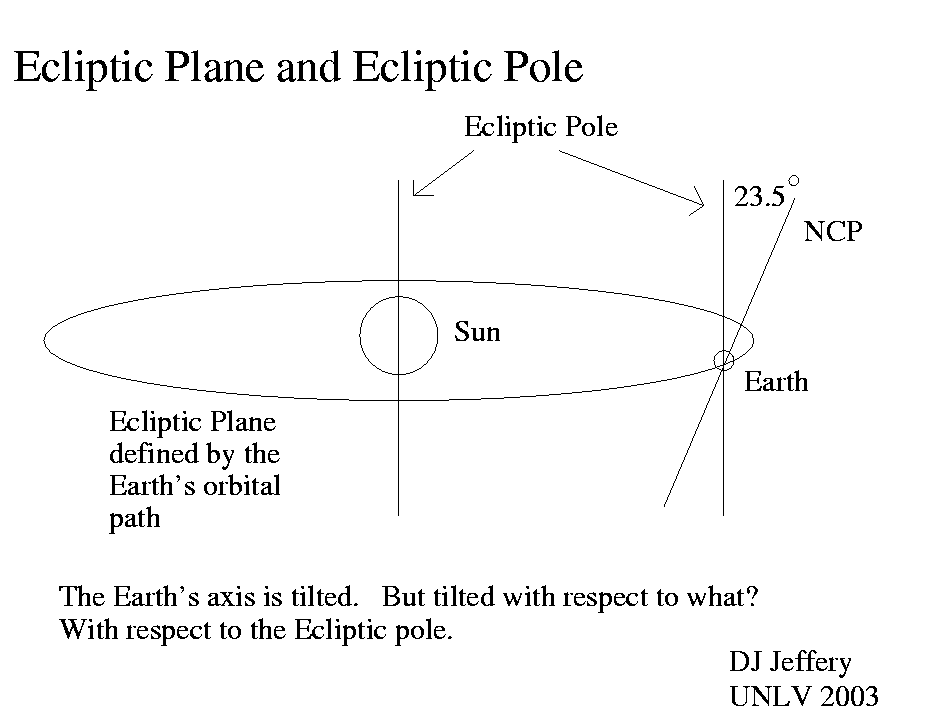
Image 1 Caption: The ecliptic, equinoxes and solstices, and seasons in the celestial sphere perspective.
Features:
- The ecliptic is the path of
the Sun on the
celestial sphere during
a solar year.
The Sun moves
eastward to
1st-order---there
is an angle offset as is shown in
Image 1.
This eastward motion
is superimposed on the daily
westward of the
celestial sphere
on the celestial axis.
- The angle offset
of the eastward motion
is due angle 23.4° tilt of the
ecliptic plane
(in which the ecliptic is embedded) from the
celestial equator.
The tilt is is an obvious consequence of the
Earth's axial tilt 23.4°
from the ecliptic axis
(i.e., the axis perpendicular
to the Earth's orbital plane
which is the ecliptic plane).
- Image 2 Caption: If you rotate Image 1 by 23.4° clockwise and shift the center to the Sun, you get approximately Image 2.
- There are 4 special points on the ecliptic: 2 equinoxes and 2 solstices:
- The 2
equinoxes are where
the ecliptic crosses
the celestial equator.
The vernal equinox (c.Mar21) is the point where the Sun crosses the ecliptic going north and the fall equinox (c.Sep21) is the point where the Sun crosses the ecliptic going south.
- The 2
solstices
are where the ecliptic reaches
an extreme point in declination.
The summer solstice (c.Jun21) is the highest point in declination and the winter solstice (c.Dec21) is the lowest point in declination.
- Note that terms solstice and equinox both have 2 meanings:
- The point on the celestial sphere.
- The event of the Sun being at that point. The event marks the beginning of a season: 1) the vernal equinox (c.Mar21) begins spring; 2) the summer solstice (c.Jun21) begins summer; 3) the fall equinox (c.Sep21) begins fall; 4) the winter solstice (c.Dec21) begins winter.
- Now judging from the heating effect of the Sun, one would at first glance think that the astronomical start dates for the seasons would be about the middle of the climatic seasons. However, seasonal lag (mainly due the time it takes large bodies of water to heat and cool) which is of order a month makes the astronomical start dates reasonably appropriate for the start dates of the climatic seasons.
- The approximate calendar dates given for the equinoxes and two solstices can also be regarded as their fiducial calendar dates. The variation in the calendar dates is between day 20 and 23 of the respective month is partially due to the cycle of common years (365 days) and leap years (366 days). Since common year is shorter than the solar year = 365.2421897 days (J2000), a run of common years moves the equinox and solstice calendar dates to later and then a leap year (which is longer than a solar year) overcorrects. Other astronomical effects cause the variations in the start dates to be more than 1 metric day =24 h = 86400 s. In any case, the average month day is about day 21, except for the fall equinox (c.Sep21) where its more like day 22 it seems---but that is hard to remember, and so yours truly sticks with day 21 as the fiducial day.
- The vernal equinox as a point on the celestial sphere is also the zero point of right ascension (RA) (i.e., 0 h RA) in the equatorial coordinate system. One can distingish this meaning of vernal equinox when one wants to as vernal equinox (0 h RA) (AKA First Point of Aries).
-
Images:
- Credit/Permission: ©
David Jeffery,
2003 / Own work.
Image link: Itself.
- Credit/Permission: ©
David Jeffery,
2003 / Own work.
Image link: Itself.
Image file: Solar system file: ecliptic_plane.html.
File: Celestial sphere: season_001_ecliptic.html.
